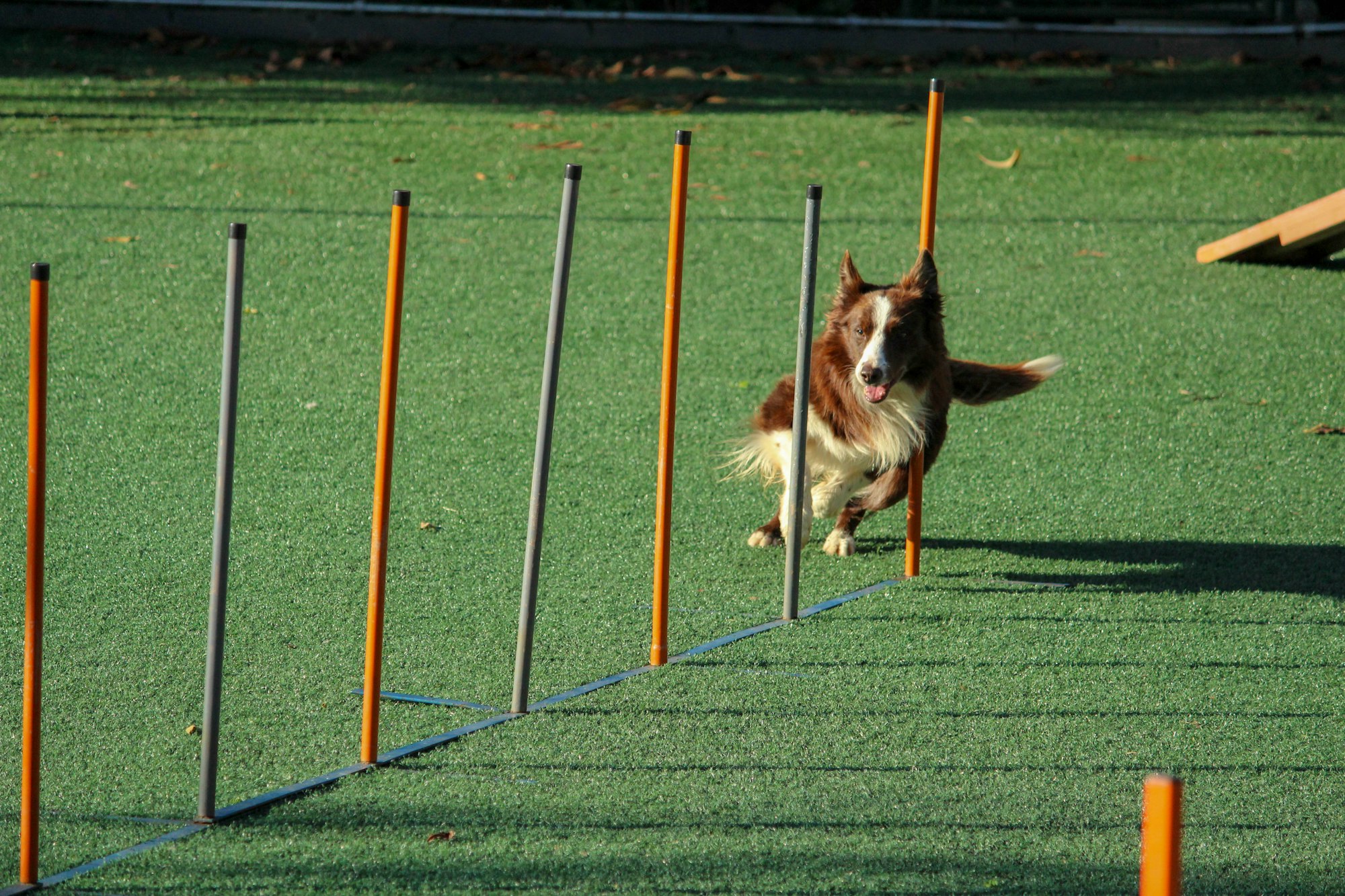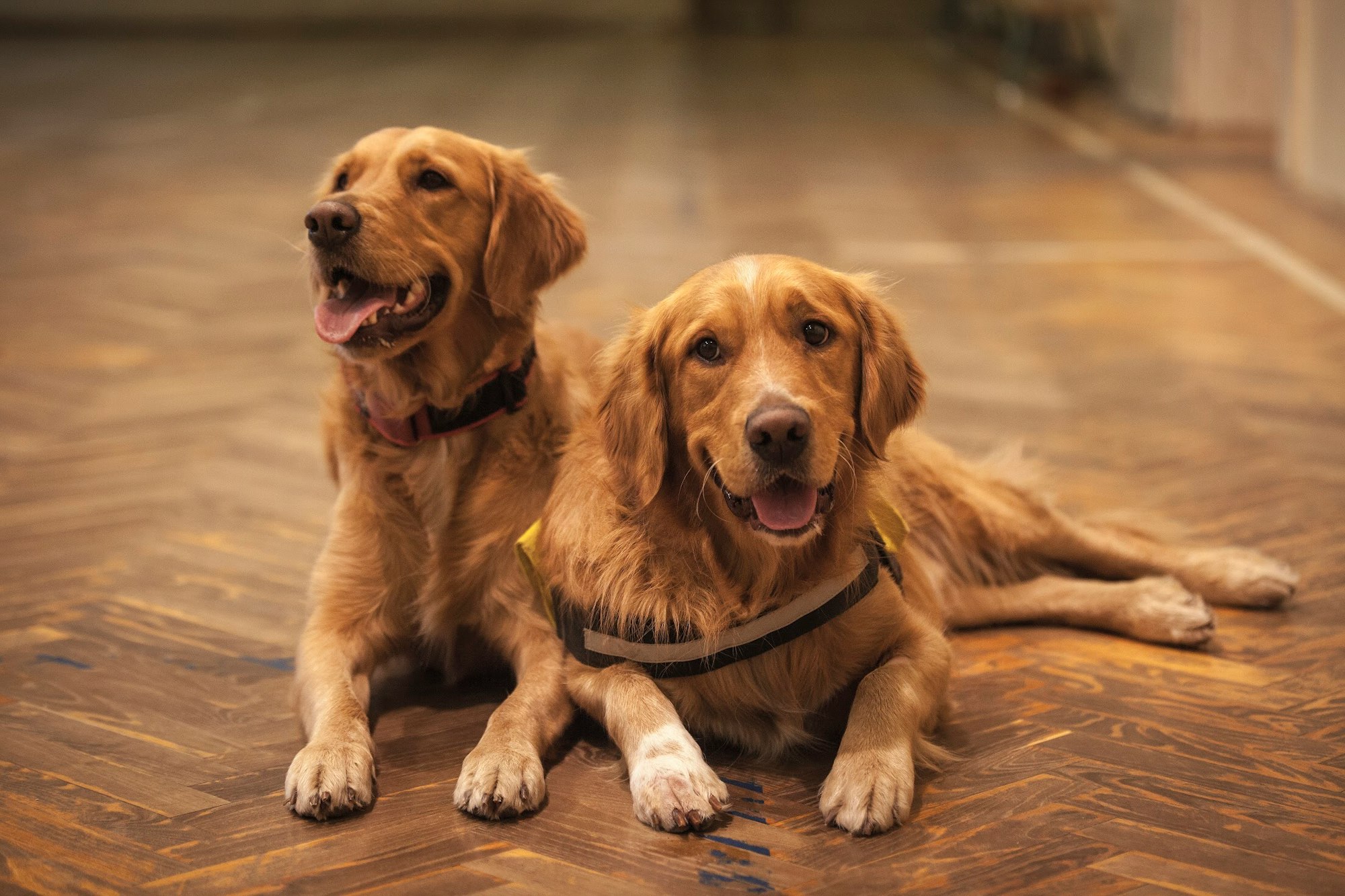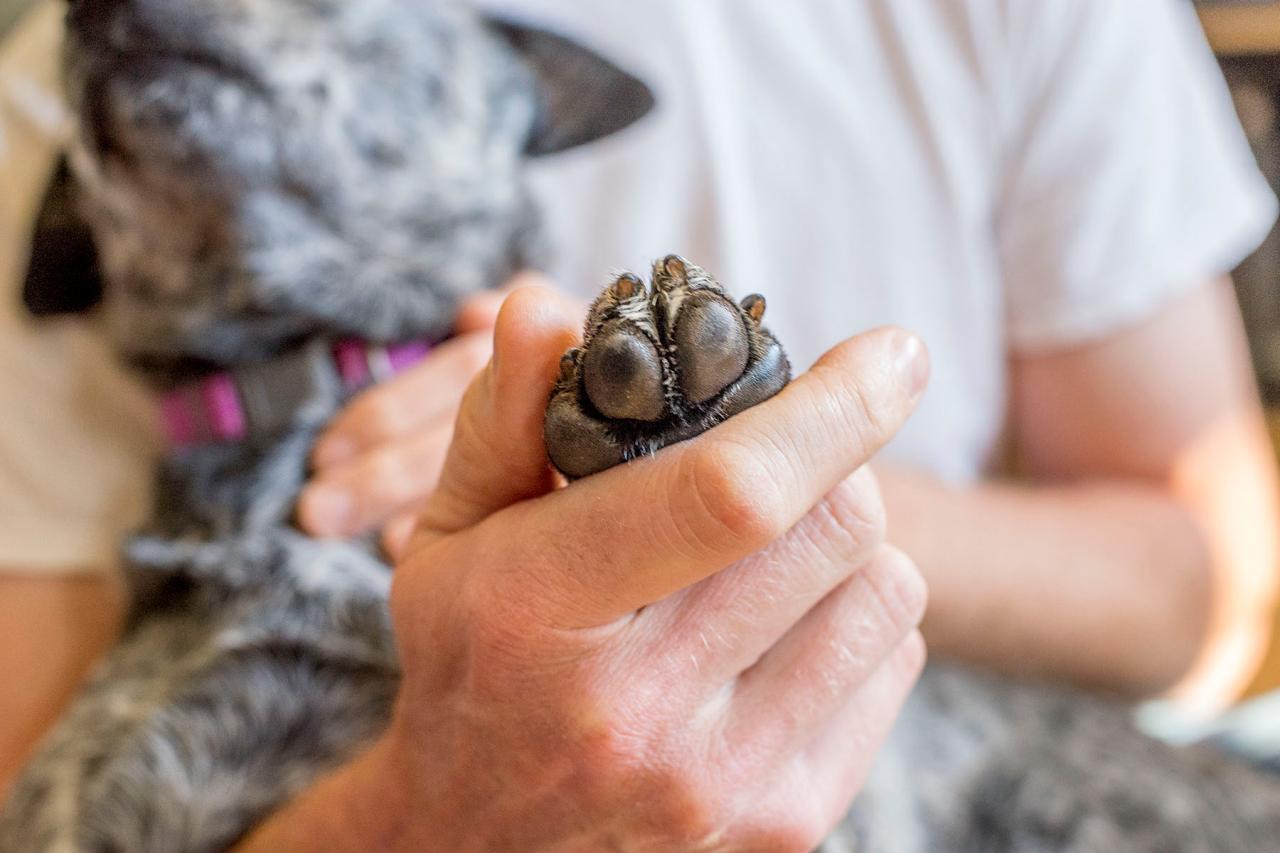Creating an at-home agility course for your pet can be a fun and rewarding experience. Not only does it provide mental stimulation and physical exercise for your furry friend, but it also strengthens the bond between you and your pet. Agility training has numerous benefits for your pet, including improved coordination, increased confidence, and enhanced overall fitness.

Planning your at-home agility course is the first step in creating a fun and engaging space for your pet. Consider factors like available space and budget to ensure that you can design a course that suits your needs. Choosing the right equipment is essential, as it should be safe, durable, and suitable for your pet's size and abilities.
Building the agility course involves setting up various obstacles and challenges that your pet will navigate through. It's important to create variations in the course to keep it interesting and challenging for your pet. This can include adjusting the height of jumps or incorporating tunnels, weave poles, and balance beams.
Training your pet to navigate the agility course is crucial for their safety and enjoyment. Start with teaching them basic commands and gradually introduce agility-specific skills. Positive reinforcement and patience are key to helping your pet learn and feel confident on the course.

Taking safety precautions is essential when setting up an at-home agility course. Ensure that the course is set up in a secure area, free from hazards or potential dangers. Supervise your pet during training sessions and use proper techniques to prevent injuries.
Adding fun ideas and games to your agility course can make the training sessions enjoyable for both you and your pet. Incorporate treats, puzzle toys, and playtime to keep your pet motivated and engaged throughout the training process.
By following these steps and putting effort into creating an at-home agility course, you can provide a stimulating and enjoyable experience for your pet while strengthening your bond and enhancing their physical and mental well-being.
Key takeaways:
- Building an at-home agility course provides exercise and mental stimulation for your pet. It promotes physical fitness, improves coordination, and strengthens the bond between you and your furry friend.
- When planning your agility course, consider your space and budget to ensure you have enough room and resources. Choosing the right equipment is essential to create a safe and enjoyable course for your pet.
- Training your pet for the agility course involves teaching basic commands and agility-specific skills. Start with basic obedience training and gradually introduce more challenging obstacles to help your pet become confident and agile.
Why Make an At-Home Agility Course?
Why make an at-home agility course? Unleash your pet's potential and create a fun and engaging environment with agility training. Discover the incredible benefits it brings to your furry friend, from improved physical fitness to mental stimulation. Get ready to dive into the world of agility training and witness the transformative effects it can have on your pet's well-being. Get ready to feel the excitement and see your pet's confidence soar as we explore the phenomenal benefits that come with agility training.
Benefits of Agility Training for Your Pet
Agility training offers numerous benefits for your pet's physical and mental well-being. When considering engaging your pet in agility training, it is important to note the benefits it provides.
- Physical Fitness: Agility training helps improve the strength, endurance, and flexibility of your pet, contributing to their overall physical fitness.
- Mental Stimulation: By engaging in agility training, your pet will develop focus and problem-solving skills, which will keep them mentally sharp and engaged.
- Bonding and Communication: Agility training provides an excellent opportunity for you and your pet to work together, building trust and strengthening your bond.
- Behavioral Control: Through agility training, your pet can learn self-control, resulting in improved response to commands and overall behavior.
- Confidence Building: As your pet successfully completes various obstacles, their confidence and self-esteem will grow.
By incorporating agility training into your pet's routine, you can ensure they experience a fun and enriching activity while reaping all the benefits it offers.
Planning Your At-Home Agility Course
When it comes to creating an at-home agility course, planning is essential. In this section, we'll dive into the key aspects of planning your course, from considering the space available and your budget constraints to selecting the right equipment. Get ready to unleash your creativity and design a course that will challenge both you and your furry friends. Let's explore how to set the stage for an exciting and dynamic agility experience right in the comfort of your own home.
Considerations for Space and Budget
When planning to create an at-home agility course for your pet, it's important to take into consideration the considerations for space and budget. Here are some factors to keep in mind:
- Space: Assess the available area in your home or backyard to determine if it can accommodate the course. Ensure there is enough room for your pet to navigate through the obstacles comfortably.
- Budget: Determine how much you're willing to spend on the course. Research the cost of different equipment such as tunnels, jumps, weave poles, and balance beams, and prioritize based on your budget.
- Ease of setup and storage: Consider whether the equipment is easy to set up and dismantle, especially if you have limited space. Look for collapsible or portable options that can be easily stored when not in use.
- Durability: Choose equipment that is sturdy and designed for outdoor use, as it will need to withstand your pet's movements and potential weather conditions.
- Maintenance: Take into account the maintenance requirements of the equipment. Look for items that are easy to clean and have long-lasting materials.
By considering these considerations for space and budget, you can create an at-home agility course that fits within your space and budget limitations while providing an engaging and stimulating experience for your pet.
Choosing the Right Equipment
When creating an at-home agility course for your pet, choosing the right equipment is crucial. Here are the steps to consider when choosing the right equipment:
- Research: Learn about different types of agility equipment available such as tunnels, jumps, weave poles, and A-frames.
- Space and Budget: Assess the available space in your home and your budget to determine which equipment will fit and is affordable.
- Size and Safety: Consider the size and breed of your pet to ensure that the equipment is suitable and safe for them to use.
- Versatility: Opt for equipment that can be easily adjusted or modified to create different challenges and difficulty levels.
- Durability: Look for equipment that is sturdy, weather-resistant, and built to last to withstand regular use.
- Training Purpose: Choose equipment that aligns with the specific skills you want to develop in your pet, whether it's jumping, weaving, or balance.
By following these steps, you can select the right equipment that will provide a safe and enjoyable agility training experience for your pet at home.
Building Your At-Home Agility Course
Transform your home into a dynamic playground with an at-home agility course! In this section, we'll dive into the exciting process of building your very own agility course. From setting up a variety of obstacles and challenges to creating unique variations and difficulty levels, we'll equip you with everything you need to enhance your physical fitness and mental acuity. Get ready to unleash your inner athlete and take your workout routine to exhilarating new heights!
Setting Up Obstacles and Challenges
Setting up obstacles and challenges for your at-home agility course is an exciting way to engage and challenge your pet. Here are some key considerations to keep in mind:
- Space: Ensure you have enough room to accommodate the obstacles you plan to include.
- Obstacle selection: Choose a mix of obstacles like jumps, tunnels, weave poles, and A-frames to provide a variety of challenges.
- Placement: Strategically position the obstacles to create a flowing course that tests your pet's agility and problem-solving abilities.
- Difficulty levels: Gradually increase the difficulty of the challenges as your pet becomes more proficient, allowing for continuous progress and growth.
- Safety: Ensure that all obstacles are set up securely and that your pet's safety is the top priority at all times.
By following these guidelines, you can create a fun and stimulating at-home agility course that will keep your pet entertained and mentally stimulated. Setting up obstacles and challenges for your at-home agility course is an exciting way to engage and challenge your pet. Here are some key considerations to keep in mind:
- Space: Ensure you have enough room to accommodate the obstacles you plan to include.
- Obstacle selection: Choose a mix of obstacles like jumps, tunnels, weave poles, and A-frames to provide a variety of challenges.
- Placement: Strategically position the obstacles to create a flowing course that tests your pet's agility and problem-solving abilities.
- Difficulty levels: Gradually increase the difficulty of the challenges as your pet becomes more proficient, allowing for continuous progress and growth.
- Safety: Ensure that all obstacles are set up securely and that your pet's safety is the top priority at all times.
By following these guidelines, you can create a fun and stimulating at-home agility course that will keep your pet entertained and mentally stimulated.

Creating Variations and Difficulty Levels
- To create variations and difficulty levels for your at-home agility course, consider adjusting obstacle heights. Changing the height of jumps or tunnels can increase or decrease the difficulty.
- Another way to incorporate variations is by adding distractions. Introduce interactive dog toys or treats to test your pet's focus and obedience.
- To keep things interesting, create new routes or layouts for your course. This will provide variety and mental stimulation for your pet.
- If you want to improve your pet's agility and endurance, try increasing their speed and timing. Time their runs and gradually increase their speed.
- Additionally, advance your pet's commands and tricks. Teach them new commands to enhance their performance and versatility.
The concept of agility training originated in England in the late 1970s. It was initially introduced as a halftime entertainment during dog shows and quickly gained popularity as a competitive sport. Over time, the sport has expanded to include various difficulty levels and variations to cater to different dogs' abilities and skills. The goal remains the same - to provide a fun and challenging experience for both pets and owners while promoting physical fitness and mental stimulation.
Training Your Pet for the Agility Course
Get ready to turbocharge your pet's agility skills with our comprehensive training guide! In this section, we'll dive into the thrilling world of preparing your furry friend for the agility course. From mastering basic commands to honing agility-specific skills, we've got you covered. Get ready to witness your pet unleash their full potential as we unlock the secrets to a successful agility training journey. It's time to turn your pet into a champion on the course!
Getting Started with Basic Commands
- Getting started with basic commands is an essential first step in training your pet for an at-home agility course. Here are some steps to help you get started:
- Establish a strong bond with your pet by engaging in regular play and positive reinforcement.
- Begin with a few simple commands like sit, stay, come, and lie down.
- Use a calm, confident voice and reward your pet with treats or praise when they successfully follow a command.
- Practice these commands in a quiet, distraction-free environment before gradually introducing more distractions.
- Be consistent with your training sessions and keep them short to maintain your pet's attention and focus.
Getting Started with Basic Commands is the foundation of any obedience training and can help ensure the safety and control of your pet. By starting with these commands, you can establish clear communication between you and your pet, setting them up for success in more advanced training exercises on the agility course. Remember to always be patient and consistent with your training, and soon your pet will be ready to tackle more challenging obstacles.
Teaching Agility-Specific Skills
Teaching agility-specific skills is a crucial aspect of training your pet for an at-home agility course. Here are some steps to consider:
- Begin with foundation skills: Start by teaching your pet fundamental commands such as sit, stay, and come. These commands will serve as the necessary building blocks for more intricate agility maneuvers.
- Gradually introduce obstacles: Start with straightforward obstacles like tunnels or jumps, and gradually increase the level of difficulty as your pet becomes more comfortable and confident.
- Provide directional cues: Train your pet to respond to both verbal and physical cues, such as turning left or right, stopping, or adjusting speed.
- Practice navigating weave poles: Teach your pet to successfully navigate a series of closely spaced poles using treats and positive reinforcement as motivation.
- Make your pet familiar with contact equipment: Introduce your pet to equipment like the A-frame or dog walk, instructing them on how to climb and descend safely.
- Combine skills into sequences: Once your pet has mastered individual obstacles and commands, start combining them into longer sequences to replicate a full agility course experience.
- Prioritize consistency and repetition: Regular training sessions with consistent cues and positive reinforcement will help your pet gradually enhance their agility skills over time.

Safety Precautions for the At-Home Agility Course
When preparing your own at-home agility course, it is of utmost importance to prioritize the safety precautions for the course. This is crucial in order to prevent any potential injuries that may occur. Consider the following safety measures:
- Clear the area: Prior to starting the course, ensure the removal of any obstacles, debris, or hazards that may be present in the designated area. By doing so, you can create a safe environment for both you and your beloved pet.
- Secure equipment: A vital aspect of safety is to check that all equipment, such as jumps and tunnels, is properly secured and stable. This precaution will greatly reduce the risk of accidents and mishaps during the course.
- Proper footwear: To maintain stability and prevent slipping while navigating the agility course, it is essential to wear appropriate shoes with good grip. This precaution includes choosing the right footwear that will enhance your performance and minimize the likelihood of any unfortunate incidents.
- Warm-up and cool-down: Each training session should begin with a warm-up and conclude with a cool-down period. This is done to effectively prevent muscle strains and injuries. Prioritizing these warm-up and cool-down exercises is beneficial for the longevity of your pet's physical health and overall well-being.
- Supervision: It is of utmost importance that you constantly supervise your pet throughout their training on the agility course. This is crucial to ensure their safety and prevent them from engaging in any unsafe behavior or attempting obstacles beyond their current abilities.
Fun Ideas and Games for Your Agility Course
- Create a hurdle or jump for your pet to jump over while enjoying the fun ideas and games on your agility course.
- Add a tunnel for your pet to crawl through, making it an engaging activity.
- Include weave poles for your pet to navigate through and have a great time.
- Set up a platform for your pet to balance on, adding excitement to the agility course.
- Add a tire jump for your pet to leap through and enjoy the fun games.
- Incorporate a target or touchpad for your pet to interact with, making the agility course more engaging.
- Include a tunnel made from PVC pipes for your pet to explore, adding to the fun ideas and games.
- Set up a slalom course for your pet to maneuver through and have a great time.
- Make use of cones to create an obstacle course, making the agility course more fun.
- Add a pause table where your pet can take a break between obstacles, while enjoying the fun ideas and games on the agility course.

Frequently Asked Questions
- How can I make an at-home agility course for my dog using household items?
- To make an agility course at home using household items, you can start with simple obstacles such as jumps. Use two buckets and a broomstick to create a jump. Once your happy dog gains confidence with jumps, you can add a tunnel using a large cardboard box and a blanket, as well as weave poles using garden stakes.
- Where can I find affordable agility course equipment for my DIY project?
- You can find affordable agility course equipment for your DIY project at flea markets, yard sales, or the hardware store. Look for items like broom handles, ski poles, cinder blocks, and wooden end tables that can be repurposed for jumps, weave poles, and other obstacles.
- How can I ensure the safety of my dog while building a DIY agility course?
- To ensure the safety of your dog, make sure any obstacles you create are stable and secure. Use materials that won't pose a risk of injury to your dog, such as sturdy jumps, well-secured weave poles, and a low dog walk made from cinder blocks and plywood. Prioritize your dog's well-being and avoid asking them to do anything that could harm them.
- What are some additional ideas for obstacles in a backyard agility course?
- In addition to jumps, tunnels, and weave poles, you can include a pause table made from a sturdy, low-to-the-ground wooden end table or coffee table. Gluing AstroTurf to the top of the table can add comfort. You can also incorporate a tire jump using a hula-hoop hung from a tree, adjusting the height to fit your dog. Remember to adjust obstacles based on your dog's abilities and always prioritize their safety.
- Can DIY agility courses help with my dog's behavior and confidence?
- Yes, DIY agility courses can be beneficial for your dog's behavior and confidence. Agility training provides mental and physical exercise, promotes teamwork between you and your dog, and can help shy dogs gain confidence. The structured training and positive reinforcement involved in agility can help improve your dog's overall behavior and well-being.
- Are there any recommended resources for more information on DIY dog agility courses?
- For more information on building DIY dog agility courses, you can refer to resources such as online articles and reviews on websites like dailypaws.com, thisoldhouse.com, or moderndogmagazine.com. These sources offer step-by-step instructions, equipment recommendations, and tips from experts in dog training and agility.






